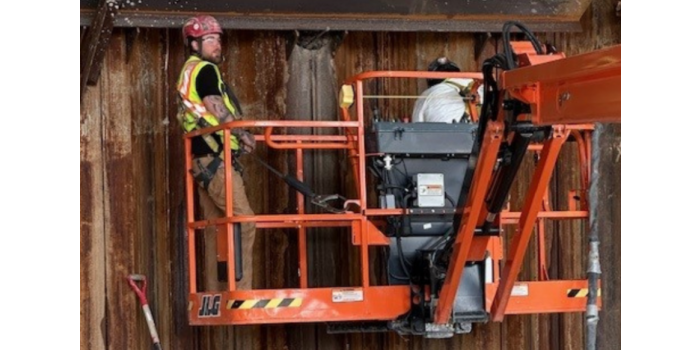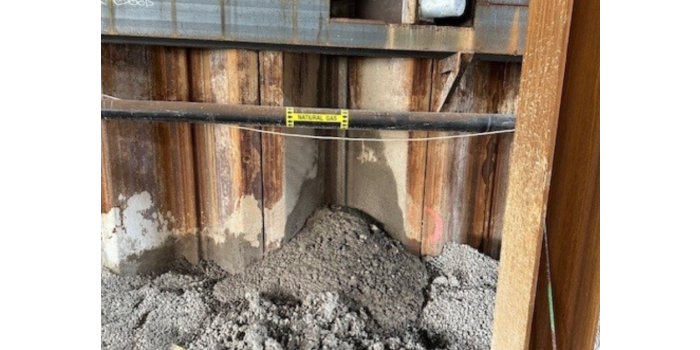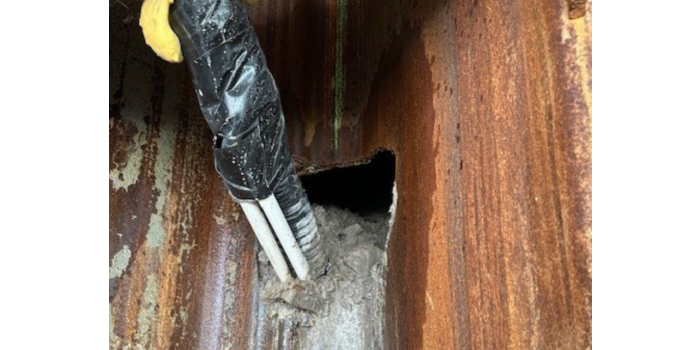Federal Tax Credit
November 29, 2022
During construction of Northwestern University’s new football stadium, a sheet pile retaining wall showed gaps around anchor penetrations where soil could escape, threatening long-term stability. Lincoln Company LLC partnered with NCFI Geotechnical to resolve the issue using Terrathane 24-010 polyurethane. Crews injected the material behind the wall, where it expanded to form a durable seal, like a cork locking into place.

Northwestern University is building a new football stadium in Illinois. As part of the new construction, a sheet pile retaining wall was installed to provide permanent shoring for a section of the stadium built below grade. To secure the wall, anchors and walers were added by cutting holes through the sheet pile and drilling into the native soil. However, these anchor points were not fully sealed during installation, leaving gaps where soil could escape through the wall. If left unaddressed, this posed a risk of growing voids and future structural instability.
To maintain the integrity of the retaining wall during construction and prevent soil migration, Lincoln Company LLC was brought in to seal the anchor penetrations. The repair required a fast-acting material that could form a reliable seal behind the sheet pile without being displaced by ongoing soil pressure. Crews cleared out some of the surrounding soil to create space for the material to properly form a backstop behind the wall. Terrathane 24-010, a high-performance dual-component polyurethane system from NCFI Geotechnical Polyurethanes, was chosen for its rapid expansion and reliable sealing capabilities. Once injected, the foam acted like a cork behind each opening—anchoring firmly in place to prevent future soil loss and potential water intrusion.


The polyurethane injection successfully sealed each anchor point, halting soil intrusion and protecting the area behind the wall from potential void development. By addressing the issue quickly and efficiently with Terrathan 24-010, the project team preserved the structural integrity of the retaining wall and allowed stadium construction to continue without delays. The solution delivered long-term durability without requiring disruptive excavation or reconstruction.
